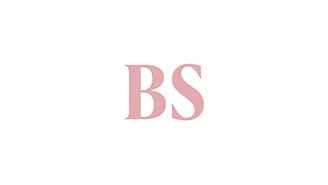There are at present two diverging narratives about Indian household consumption. Stock market analysts, especially mutual funds, propagate the narrative of unstoppable, runaway, world-beating consumption growth. They project that the demographics, living conditions, and income-growth parameters that have driven stellar aggregate consumption growth between 2010 and 2025 (which is true) will continue to improve steadily (cannot argue, but the devil is in the detail).
In another narrative, since 2024 main street watchers have been flagging slower consumption growth. The factors are private final consumption expenditure growing slower than gross domestic product, a weak job environment, welfare-fuelled consumption, stagnant middle-class wages causing decline in spending, and incomes growing slower than prices. Reinforcing this are the disappointing results for the fourth quarter and full year of FY25 of large FMCG (fast-moving consumer goods) companies that address the full breadth of Consumer India, such as ITC, Hindustan Unilever, Nestle, and Colgate-Palmolive.
Although leading FMCG companies called out weak urban demand, the Kantar consumer track reports that urban demand is not slackening but households are downtrading from high-priced big brands to local, unbranded cheaper products.
American novelist F Scott Fitzgerald had said “the test of a first rate intelligence is to hold two opposing ideas in the mind at the same time and still retain the ability to function”. Our present consumption discourse challenges us to do this.
An important listening post to hear the consumer voice more broadly than through the FMCG filter is the RBI Consumer Confidence Survey, which now includes rural India, where over 50 per cent of household consumption lies. A look back at the data from 2012 shows it to be a sensitive measure of change.
Also Read
The current situation index of consumer confidence (refer table) shows that between January 2024 and March 2024 both rural (R) and urban (U) India stayed in the zone of mild pessimism but with R doing better than U, with a widening gap. The gap widened slightly more in 2025 despite both U and R improving. U stayed mildly pessimistic but R finally crossed into the zone of neutrality. However, rich rural households have not been pessimistic. The richest 5 per cent, numbering 10 million, have mostly been moderately optimistic since January 2024. The next richest 25.5 million have been in the zone of neutrality, but with confidence levels higher than average urban confidence levels. Presumably the top 20 per cent of urban households will show the same pattern, even more markedly.
Perceptions of the employment current situation (ECS) and income current situation (ICS) in rural India have shown an uptick since July 2024. Urban India has shown an improvement on both since January 2025. Rural ECS in 2025 crossed into the mild optimism zone though its ICS has stayed mildly pessimistic. Urban has shown the reverse pattern. Its ECS stayed pessimistic while its ICS crossed into the zone of neutrality in March 2025. (This reversal of pattern raises the possibility that urban consumer India sees work availability and employment as different things while rural perhaps does not make that distinction).
Expectations of non-essential expenditure in the next one year show strong optimism in rural while urban shows moderate optimism.
The absence of strong headwinds or tailwinds means that company strategy will be the biggest driver of performance in FY26. As always with Consumer India, the data shows that future optimism is strong. An improvement in the ECS, the ICS, and inflation will unleash pent-up mass market consumer desire to spend.
| Urban | Rural | |
| Worse | 40-41% | 35-38% |
| Same | 22-23% | 24-27% |
| Increase | 35% | 36-41% |
| Urban | Rural | |
| Worse | 22-25% | 29-33% |
| Same | 51-55% | 43-47% |
| Increase | 24-25% | 22-25% |

)
